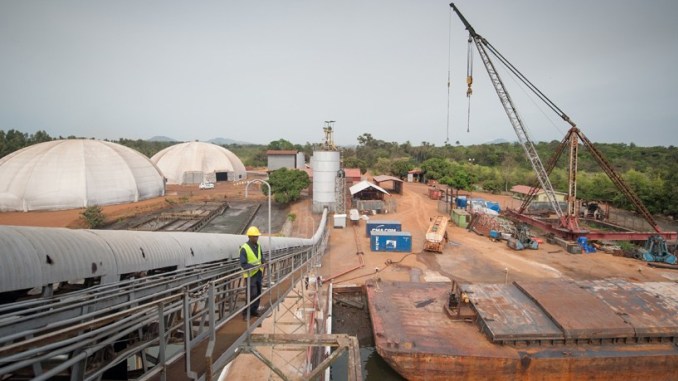
Economic History of Sierra Leone
Sierra Leone is a small country in West Africa. The economy of Sierra Leone is an agro-based economy. 50 to 80% of the population makes a living through agriculture. Cocoa and coffee are the main crops grown for commercial purposes.
1980s & 1990s economy
In the 1980s, Sierra Leone used to exported rice. However, today Sierra Leone is an importer of rice which means that the country’s staple is actually imported. This is a sign that the economy is not headed in the right direction. A nation has to be able to feed itself.
Sierra Leone’s economy also heavily relies on on mining. In the late 1990s, the country was the largest producer of rutile. Rutile is a mineral composed primarily of titanium dioxide. Rutile is the most common natural form of titanium dioxide. It is useful for the manufacture of certain optical elements, especially polarization optics, for longer visible and infrared wavelengths up to about 4.5 μm. Sierra Leone is the largest producer of natural rutile but because of security concerns during the war, the company had to be shut down. Sierra Rutile Ltd was the largest producer of rutile in the world. In the 1990s, it was also the country’s largest private sector employer in the country. This corporation was also the largest foreign exporter so when this company closed down it had devastating effects on the economy.
On December 7, 2016 the company was acquired by Iluka Resources Limited for A$375 million (USD $ 287m). Iluka incurred the company’s outstanding net debt of A$80million and is now running operations in Moyamba and Bonthe districts of Sierra Leone.
Blood Diamond Industry
In the recent past, Sierra Leone has been associated with the mining and sale of blood/ conflict diamonds. The blood diamond industry brought in large amounts of money. In 2000, it was estimated that the diamonds brought in between $76 Million and $127 million and by 2004, it was estimated to be as high as $150 Million dollars. Today, it is estimated that the diamonds produce more than $300 million dollars. Unfortunately, this is sold on the black market and it does not end up benefiting most of the ordinary citizens.
It is commonly known that most of the diamond trade in Sierra Leone is controlled by Lebanese traders. Presently, there is only one company that mines and produces diamonds legally in Sierra Leone. Diamond mining is capital intensive and many large companies have not been willing to invest the necessary capital required.
Currently, out of control national debt has been a big issue for Sierra Leone. They owe approximately $1.7 billion to the IMF. In addition, about 60% of the government is funded by grants and loans from financial institutions. This has created a precarious situation for Sierra Leone. Sierra Leone has received some assistance from China but lack of leadership and strategic planning has created a government that is more often a beggar and not a lender.



